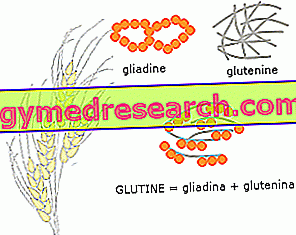By Dr. Dante Bianchi
More antioxidants to counteract aging and cell damage caused by UV rays.
Dark chocolate is experiencing a strong revaluation in the medical and health fields. Even oncologists suggest adding chocolate among the foods to be consumed to ward off important diseases.

But among all the cocoa substances the most important ones are the polyphenols, with the epicatechin in the head. Polyphenols are natural antioxidants already contained in high quantities in the cocoa bean and preserved in various percentages in the resulting product, chocolate. Antioxidants play a fundamental role in eliminating free radicals which are responsible for peroxidation at the cellular level. What follows from strong oxidative stresses is the development of certain diseases and the aging of tissues.
A new product has recently been proposed in Italy, the trade name is Oxicoa, and it is a very natural chocolate that preserves almost all the antioxidants of the Theobroma cacao bean. The difference compared to a standard chocolate lies in the manufacturing process, especially in the fermentation and roasting phases of the broad bean itself. The result is that Oxicoa contains up to three times the amount of polyphenols found in traditional fondant. To give some examples with foods considered effective "scavengers" of free radicals 10 g of Oxicoa have the antioxidant power of three glasses filled with blueberries (365 g), or two cups of green tea (367 g) or a watermelon of 3 kilos ( USDA data: United States Department of Agriculture).
The chocolate rich in polyphenols thus becomes a pleasant food that helps you stay healthy, and given its marked biochemical activity, allows a reduced daily consumption, which allows tranquility from a caloric point of view: 10 grams equals to 50 kcal, roughly like half an apple. The chocolate is presented in the form of beans and it is possible to request it at the pharmacy, parapharmacy and herbalist's shop, or on the website www.oxicoa.com.
A recent study conducted by the London University of the Arts and published in the Journal of Cosmetic Dermatology, has shown that the antioxidant action of chocolate rich in polyphenols has significant beneficial effects on the skin, as it acts as a photoprotector against UV rays. This property was tested on a group of 15 people who took a portion of the polyphenol-rich chocolate daily for 12 weeks. A second group took an equal portion but of poor chocolate in these substances.
Table 1 Nutritional values of chocolate with a high flavonoid content used in the study
Nutritional values for 100g | Comments | |
Value energetic | 502 Kcal | Approximately 100 Kcal per 20g |
Sugars | 23.3g | Mono and disaccharides. No added sweeteners |
fibers | 19.1g | Based on a combination of inulin, fructo-oligosaccharides and resistant dextrins |
Grassi | 38.1g | 7.62g of fat for a portion of 20g |
Flavonoids ORAC (anal.) | Min.3% 50900 (509 / g) | Min. 600mg of flavonoids for a portion of 20g 10, 000 ORAC for a 20g portion (for the antioxidant power of other elements, expressed in ORAC, click here) |
After 12 weeks of regular consumption, the two groups were then subjected to a slight exposure to UV rays and the researchers recorded the minimum dose (of UV rays) that caused an erythema (MED, Minimal Erithema Dose ). Result: the group of polyphenol-rich chocolate needed a more than double dose of UV rays, compared to the standard chocolate control group, so that an erythema (burn) arose. In fact, it is precisely ultraviolet rays that cause the release of free radicals at the level of the skin.
Other causes responsible for the release of free radicals are smoking, physical stress resulting from muscular work, psychic pressure and pollution. So chocolate goes to reinforce the rather recent concept that to take care of the skin it is appropriate to do it not only from the outside - in this case the cosmetics industry enjoys a long and glorious tradition - but also from within, with food or supplements with properties that are also reflected on the surface of our body. Ideally we can therefore think of the food of the gods as a sweet cream that tastes.



